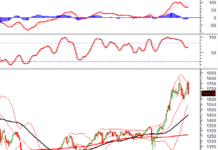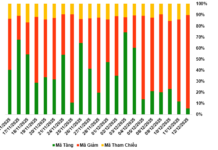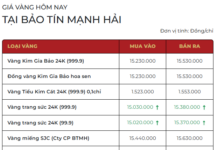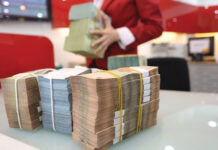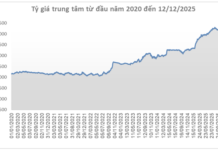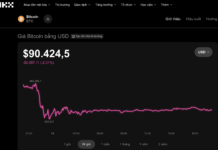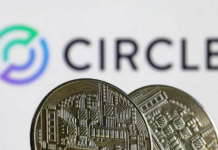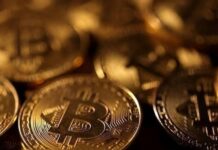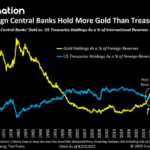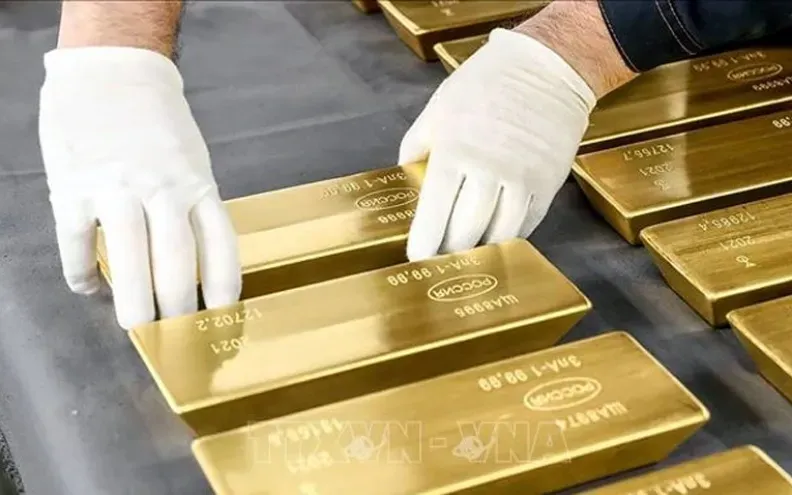
Gold prices have been stagnant for months, but they’re now on the rise again, hitting record highs. On September 2nd, gold surpassed the $3,500 per ounce mark for the first time since April, followed by a new peak of nearly $3,550 per ounce on September 3rd.
Gold has broken records 30 times since the start of the year, and many analysts believe there’s more to come. Experts at Morgan Stanley predict a further 10% increase, with prices reaching up to $3,900 per ounce.
Alexander Zumpfe, a trader at precious metals specialist Heraeus, argues from a technical perspective in his market commentary: Should gold prices breach the $3,600 per ounce level, the path toward $3,650 per ounce would be evident. Commerzbank believes the $3,600 per ounce mark is achievable by the end of this year. Analysts at UBS have also raised their gold price target to a range of $3,600 to $3,700 per ounce.
Not only analysts but also large investors are bullish on gold.
According to the World Gold Council (WGC), more than 116 tons were poured into gold exchange-traded funds (ETFs) from June to the third week of August.
On Friday, August 29th, the world’s largest gold ETF witnessed the strongest inflow since the tariff crisis back in April, as reported by Commerzbank analyst Thu Lan Nguyen.
Asset managers often use gold ETFs as a means to invest in the precious metal. Consequently, the corresponding inflows also trigger short-term price volatility, similar to the bets placed by speculators and hedge funds. These ETFs primarily trade gold on futures markets, buying or selling contracts that guarantee gold delivery at a specific price and future date.
Bullish Positions Grow
The regulatory body, the Commodity Futures Trading Commission (CFTC), has recorded this initial growth: In the week ending August 29th, the bullish positions held by asset managers on the COMEX exchange increased by over 2%. At that time, gold had just shifted into a slow upward climb. With these bullish positions, investors are wagering on rising gold prices.
What’s fueling the confidence of speculators and ETF investors, who have triggered these recent surges? The Federal Reserve may cut interest rates as soon as this month. Gold truly benefits from low-interest rates as it offers no current income. However, during periods of high interest, gold loses its allure compared to other investments deemed safe, such as bonds.
Investors Losing Faith in Bonds
At least, that’s the general rule of thumb. But this correlation has been weakening over the past two years. Earlier this year, gold prices repeatedly hit new all-time highs, even as yields on 10-year US Treasuries traded above 4%.
The debt of industrialized nations is rising globally, leading to a sell-off in many bond markets. Prices are falling, and yields are climbing—for instance, in Germany, the yield on 30-year government bonds has risen to its highest level since 2011. In the UK, the yield on 30-year government bonds soared to levels last seen in 1998. In France, yields are at their highest in 14 years.
As a result, investors are losing faith in the solvency of these nations. The same is happening with the US. The debt of the world’s largest economy has surpassed $37 trillion. The US now spends more on servicing its debt than it does on its military.
In this context, an interest rate cut would be a welcome development for the US government. Hence, President Donald Trump is attempting to exert influence over the central bank, an institution meant to be independent of governmental control.
The latest move in the power struggle between Trump and the Fed: An attempt to oust Fed governor Lisa Cook over allegations of mortgage fraud. Cook has filed a lawsuit against this action, arguing that the allegations are merely a pretext to influence US monetary policy. Recently, she voted to keep interest rates unchanged.
Power Struggle with the Fed
Commerzbank analyst Thu Lan Nguyen believes this move is intended to put the Fed’s policy-setting committee, the FOMC, on the defensive. “The allegations against Cook serve as a clear warning to other FOMC members to succumb to government pressure for significant rate cuts,” she writes.
As a result, the market is losing faith in the Fed’s independence and, by extension, the US dollar. The alternative currency—gold—is becoming increasingly attractive, as no central bank or government can arbitrarily increase or decrease its value.
Gold is also appealing from the perspective of non-Western countries due to the absence of counterparty risk. Russia’s example illustrates this. After Russia’s special military operation in Ukraine in 2022, the US froze its foreign exchange reserves. However, Russia still has free access to its gold.
Central Banks Holding Fewer Dollars
Other countries have followed suit: Since 2022, annual gold purchases by central banks have exceeded 1,000 tons, double the amount from a decade ago.
Central bank demand has slowed recently. According to the WGC, demand in Q2 was 20% lower than the previous year, totaling 166 tons. However, experts believe this figure could be significantly higher this year compared to pre-2022, before Russia’s special military operation in Ukraine. WGC’s chief market strategist, John Reade, expects annual demand to range from 750 to 800 tons.
Experts at consulting firm Metals Focus even predict a figure of 900 tons. They observe that the trend of central banks reducing their USD reserves remains intact.
Firstly, Q2 purchases were still about 30% higher than the quarterly average from 2010 to 2019. “The continued effort to reduce dependence on USD-denominated assets continues to drive central banks toward alternative investments.” Secondly, despite high gold prices, central banks are only selling at a limited scale. Lastly, sales in the first half of the year dropped 23% from the already low base of 2024.
Non-Western countries are not only becoming increasingly reliant on gold instead of USD reserves, but they’re also increasingly settling transactions in their local currencies. However, the USD remains dominant, accounting for approximately half of all cross-border transactions over the SWIFT network, as American financial expert Jennifer Johnson-Calari wrote in a post on the WGC website. A true alternative hasn’t emerged yet.
Turning Point in the Monetary System
However, the surge in gold prices since 2022 could “signal a turning point in the international monetary system—the beginning of a transition, albeit a slow one, from a USD-centric system to a multipolar one,” says Johnson-Calari.
She refers to a world order with multiple power centers. The Trump administration is accelerating this trend by abandoning free global trade and a strong dollar. “These developments are driving both central bank gold purchases for reserve diversification and private investor interest in hedging against tariffs and stagnant inflation.”
The Soaring Price of Gold: An Unexpected Turn of Events
“The SJC gold bar prices soar to new heights as small gold shops push the price to a record high of VND 139 million. This surge has caught the attention of experts, who now warn of potential risks associated with the SJC gold market. With the prices skyrocketing, investors and buyers must stay vigilant and informed to navigate this volatile market.”
The Unaffordable Gold Conundrum: A Tale of Wealth and Woes
This morning, gold prices surged to unprecedented levels, with SJC gold bullion reaching a staggering 130 million VND per tael, and gold rings nearly touching the same milestone. An unprecedented surge in demand from buyers has left gold businesses depleted, with some retailers running out of stock entirely, resulting in waiting periods of up to 15 days for eager customers eager to get their hands on the precious metal.
The Greenback Inches Up
“During the week of August 25-29, 2025, the US dollar staged a mild recovery in the international market following the release of US Commerce Department data. The data revealed a 2.9% year-over-year increase in the core Personal Consumption Expenditures (PCE) price index for July, the highest since February 2025.”



